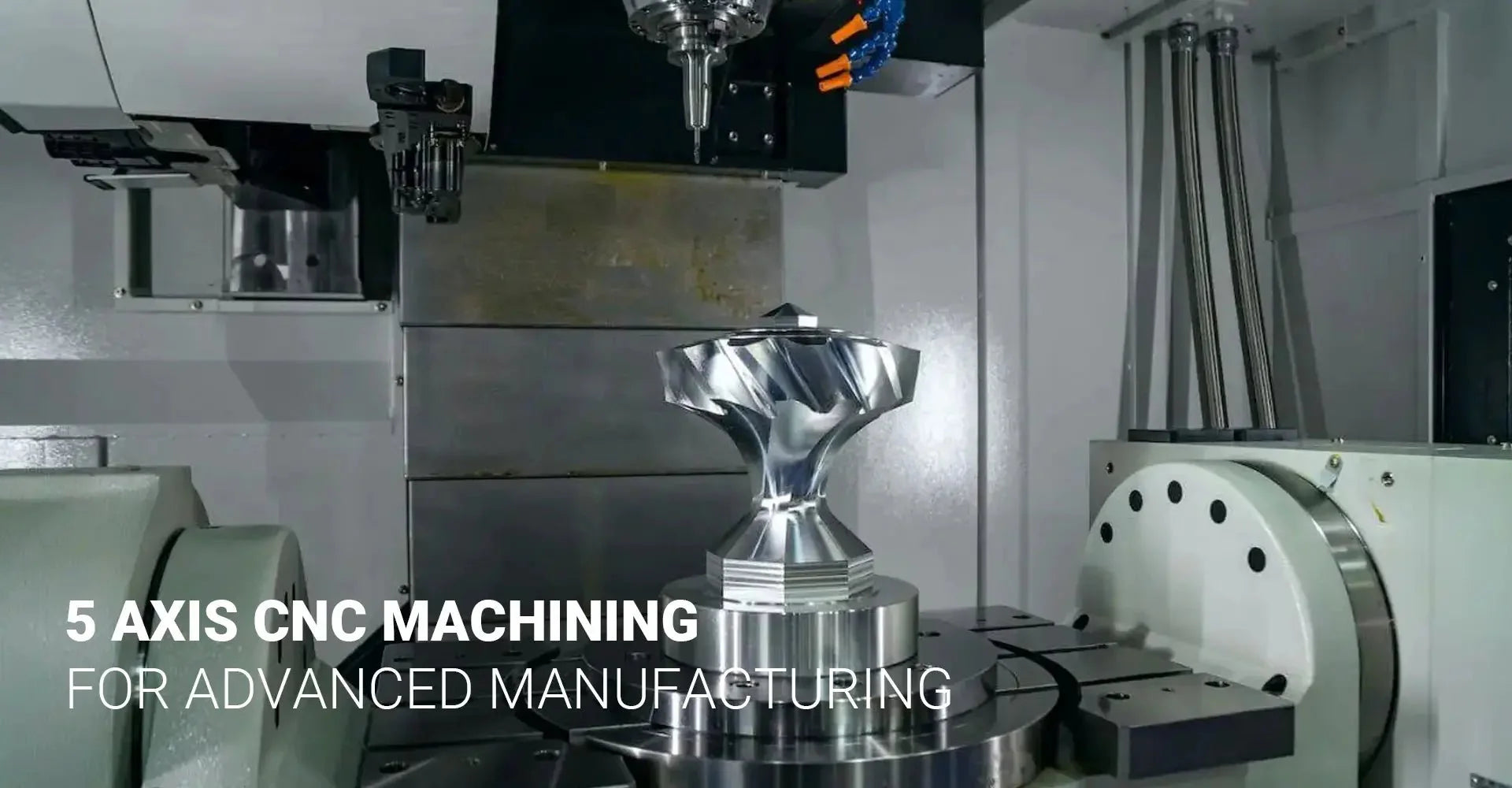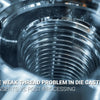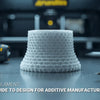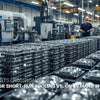Why Should You Consider 5-Axis CNC Machining for Advanced Manufacturing?

Why Should You Consider 5-Axis CNC Machining for Advanced Manufacturing?

In today's precision-driven manufacturing landscape, the demand for complex, high-accuracy parts has never been higher. 5 Axis CNC machining stands at the forefront of this manufacturing revolution, offering unprecedented capabilities that extend far beyond traditional machining methods.
With projected market growth of $728.42 million from 2022 to 2027 and a compelling CAGR of 5.92%, 5 Axis CNC machining is rapidly becoming the go-to solution for manufacturers seeking superior precision and efficiency in their production processes.
Let's explore how this advanced manufacturing technology is reshaping production capabilities and why it might be the solution you've been looking for in your manufacturing operations.
Table of Contents
- What Are the Core Functions of 5 Axis CNC Machining?
- How Does 5 Axis CNC Machining Improve Production Quality?
- Which Industries Benefit Most from 5 Axis CNC Machining?
- What Are the Key Advantages of 5 Axis CNC Machining?
- What Are the Main Challenges in 5 Axis CNC Implementation?
- How Is 5 Axis CNC Technology Advancing in 2025?
What Are the Core Functions of 5 Axis CNC Machining?
5 Axis CNC machining represents a significant advancement in manufacturing technology, offering movement along five distinct axes simultaneously. This sophisticated approach allows for the creation of complex geometries and intricate designs that would be impossible with traditional machining methods. At Hotean's CNC Machining Service, we've seen firsthand how these capabilities transform manufacturing possibilities.
Unlike conventional 3-axis machines that move only along X, Y, and Z axes, 5-axis machines add two rotary movements, typically labeled as A and B axes. This additional freedom of movement enables the cutting tool to approach the workpiece from virtually any angle, ensuring optimal cutting conditions and superior surface finishes.
The technology incorporates various machine configurations, including:
- Double Pivot Spindle Head Type
- Pitching Swing Head Type
- Double Rotary-Table Type Each configuration offers unique advantages for specific applications, making the technology highly versatile across different manufacturing needs.
How Does 5 Axis CNC Machining Improve Production Quality?
The impact of 5 Axis CNC machining on production quality is substantial, particularly when integrated with advanced industrial machinery. The technology's ability to maintain consistent tool-to-surface contact angles throughout the cutting process results in superior surface finishes and tighter tolerances.
Production quality improvements are evident in several key areas:
- Reduced setup time and handling
- Enhanced surface finish quality
- Improved geometric accuracy
- Better tool life and performance
When compared to traditional 3-axis machining, 5-axis technology demonstrates superior capabilities in producing complex parts in a single setup, significantly reducing the potential for errors that can occur during multiple setups.
Which Industries Benefit Most from 5 Axis CNC Machining?
Multiple industries have embraced 5-axis CNC machining for its versatility and precision. The automotive industry stands as a prime example, where complex components require exceptional accuracy and consistency in production.
Key industries leveraging this technology include:
- Aerospace: Manufacturing turbine blades and structural components
- Automotive: Producing engine components and custom parts
- Medical: Creating precise surgical instruments and implants
- Defense: Manufacturing specialized equipment and components

Each industry benefits from unique aspects of 5-axis machining. For instance, the aerospace industry values its ability to machine complex geometries in exotic materials, while the medical industry appreciates its capacity for producing intricate surgical instruments with exceptional precision.
What Are the Key Advantages of 5 Axis CNC Machining?
The advantages of 5-axis CNC machining extend far beyond traditional manufacturing capabilities, offering a comprehensive suite of benefits that directly impact both production efficiency and bottom-line results. At Hotean's CNC Machining Service, we've documented significant improvements in production metrics across multiple manufacturing scenarios.
Quantifiable benefits include:
- Setup time reduction of 85% compared to 3-axis machining
- Tool life extension by up to 50% through optimal cutting angles
- Surface finish improvement of up to 60%
- Production time reduction of 40-75% for complex parts
- Scrap rate reduction of up to 25%
- Labor cost reduction of 30-50% for complex parts
The advantages can be broken down into three critical categories:
-
Technical Advantages:
- Ability to machine five sides of a part in a single setup
- Continuous tool contact for superior surface finish
- Shorter cutting tools for reduced vibration
- Optimal cutting angles for improved tool life
- Better chip evacuation through intelligent tool positioning
- Capability to create complex undercuts and deep pockets
-
Production Efficiency:
- Elimination of multiple setups and fixturing
- Reduced handling time between operations
- Decreased chance of human error
- Improved accuracy through single-setup manufacturing
- Higher spindle utilization rates
- Reduced need for specialized fixtures
-
Business Benefits:
- Access to high-value manufacturing contracts
- Capability to serve multiple industries
- Reduced labor costs through automation
- Lower per-part costs for complex components
- Increased competitive advantage
- Enhanced quality assurance metrics
What Are the Main Challenges in 5 Axis CNC Implementation?
While 5-axis CNC machining offers substantial benefits, implementing this technology presents several significant challenges that manufacturers must address through careful planning and strategic investment. Understanding these challenges is crucial for successful integration with existing industrial machinery systems.
Critical challenges include:
- Initial investment ranging from $250,000 to $1,000,000+
- Programming complexity requiring 40-60 hours of specialized training
- Setup and calibration time of 1-2 weeks
- Maintenance costs averaging 8-15% of machine cost annually
- Learning curve of 3-6 months for optimal operation
These challenges can be categorized into four main areas:
-
Financial Considerations:
- High initial machine investment
- Costly CAM software licenses and updates
- Expensive tooling and fixtures
- Training and certification costs
- Increased insurance premiums
- Higher maintenance and service contracts
-
Technical Complexities:
- Advanced G-code programming requirements
- Complex tool path calculation and verification
- Machine calibration and maintenance
- Post-processor development and testing
- Collision detection and avoidance
- Temperature and environmental control requirements
-
Operational Challenges:
- Extended setup and proving times
- Need for specialized cutting tools
- Complex fixture design requirements
- Stringent safety protocols
- Regular calibration requirements
- Enhanced quality control procedures
-
Human Resource Requirements:
- Skilled programmer recruitment
- Comprehensive operator training
- Ongoing skill development
- Multiple shift coverage
- Specialized maintenance personnel
- Quality control expertise
-
Implementation Hurdles:
- Integration with existing workflows
- Documentation and process standardization
- Quality control system updates
- Production scheduling adjustments
- Workplace layout modifications
- Supply chain adaptations
Each of these challenges requires specific strategies and solutions, often necessitating:
- Comprehensive training programs
- Phased implementation approaches
- Partnership with experienced service providers
- Regular assessment and adjustment of procedures
- Continuous improvement initiatives
- Strong change management protocols
How Is 5 Axis CNC Technology Advancing in 2025?
The current landscape of 5-axis CNC machining is marked by rapid technological advancement and increasing adoption across industries, with market projections indicating sustained growth.
Notable developments include:
- Integration of AI and machine learning
- Enhanced automation capabilities
- Improved user interfaces
- Advanced simulation tools

These advancements are making the technology more accessible and efficient, while simultaneously opening new possibilities for complex manufacturing processes.
Conclusion
5 Axis CNC machining represents a significant leap forward in manufacturing technology, offering unprecedented levels of precision, efficiency, and versatility. While challenges exist, the benefits and continuing technological advances make it an increasingly attractive option for manufacturers across various industries.
External Links Recommendation
-
Posted in
5 Axis CNC Machining, CNC machining





